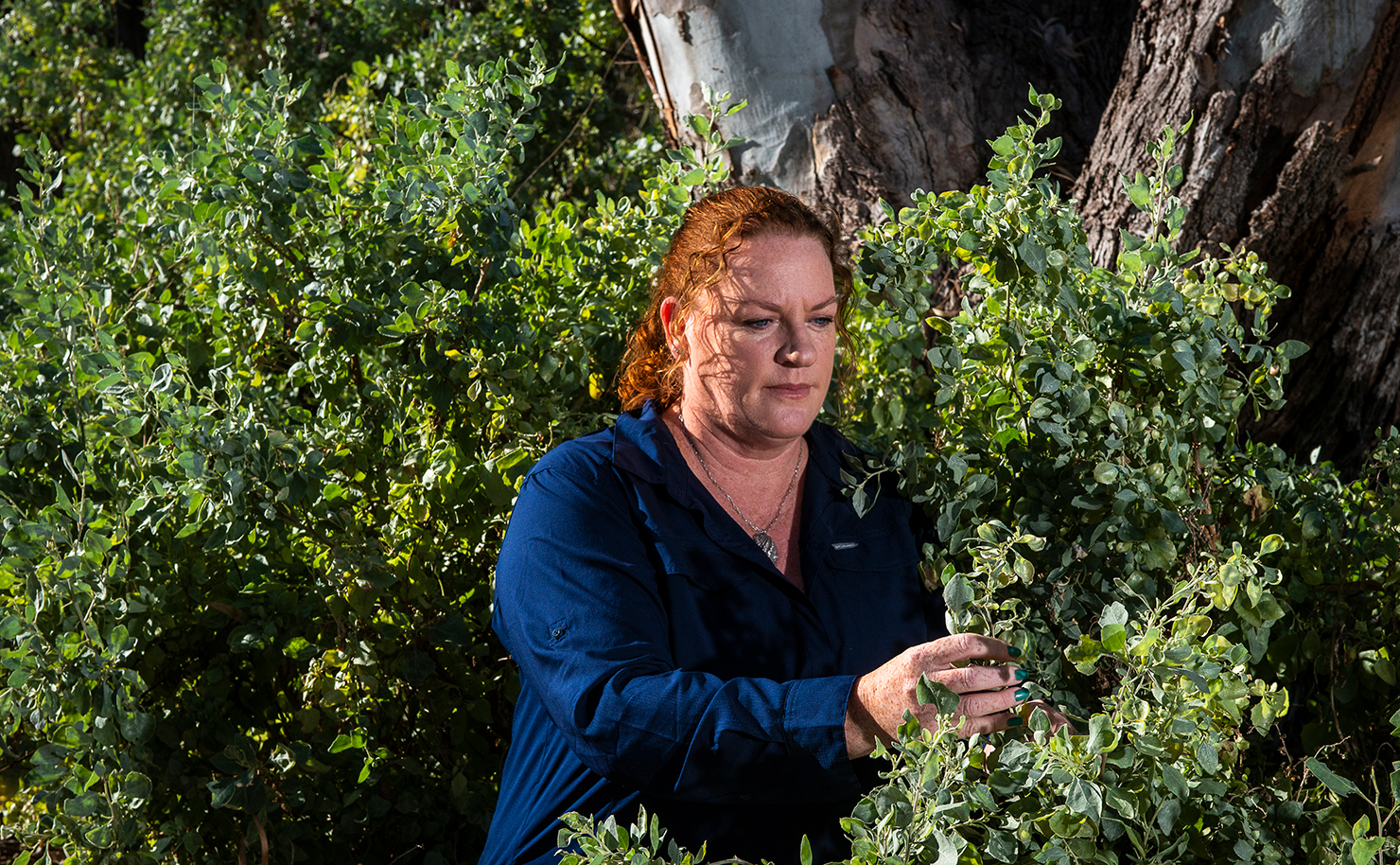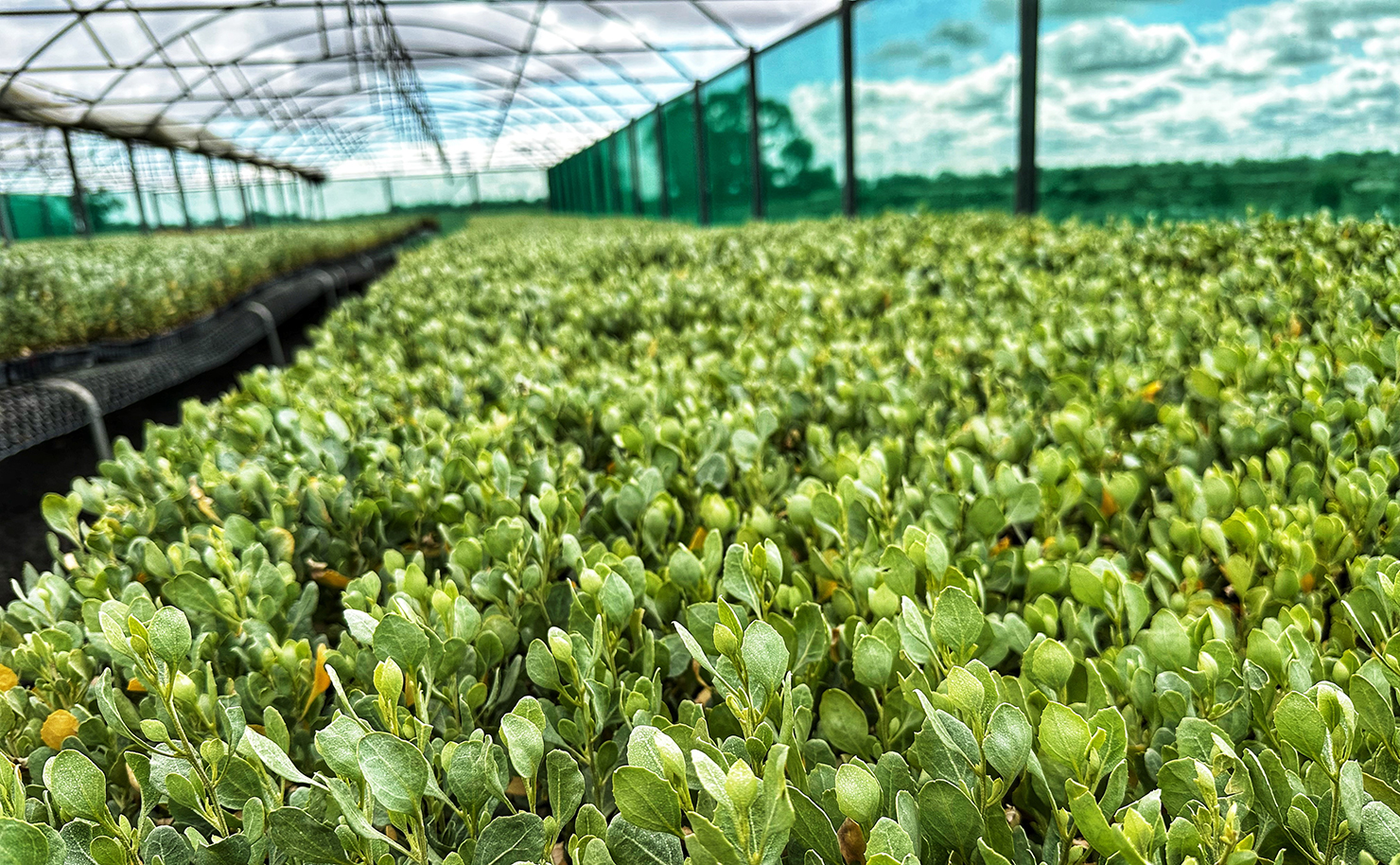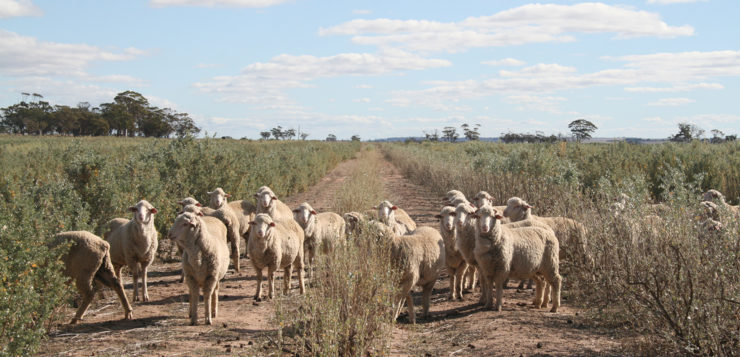Sheep and cattle farmers across Australia’s south east have begun planting an elite variety of ‘Old Man Saltbush’ this winter, to supplement feed during dryer conditions in anticipation of a potential El Nino predicted to cause widespread droughts in Australia in the coming years.
Anameka Saltbush is a specially selected variety of the drought-tolerant native shrub, developed over 15 years by the CSIRO, with partners in government and industry. It’s unique for its higher nutritional value and improved palatability for livestock and its potential to regenerate the topsoil of land that is too saline or infertile. It’s fast-growing, and occurs naturally in WA, SA, NT, Vic, NSW and Queensland.
Saltbush is generally not the first choice of feed for livestock, but it’s a genuine supplement when pastures have dried up. Even humans can eat it – the seeds and leaves of Old Man Saltbush have long been a staple in bush tucker circles. It can be used like a leafy vegetable or salad, blanched or sautéed, wrapped around meat or fish, or used as a stuffing for poultry. You can even dry it, for use as an herb. It has, as you might expect, a salty flavour, and is rich in protein, antioxidants and minerals.

CSIRO agricultural scientist, Dr Hayley Norman, says that during dry years when there is a shortage of available feed, Anameka saltbush can provide key nutrients that improve livestock productivity and health.
“Anameka Saltbush is a moderate-energy, high crude protein and sulphur feed source that is full of essential minerals and antioxidants,” Dr Norman said. “It grows well on most landscapes, and once established, Anameka Saltbush can become a ‘living haystack’ for grazing livestock for more than 20 years if managed correctly.”
CSIRO’s Drought Resilience Mission is driving wider adoption of Anameka Saltbush in drought-prone regions across southeast Australia for the first time. CSIRO modelling indicates that Anameka shrub systems offer 20 per cent higher economic returns compared to standard saltbushes, particularly in relatively dry years. Other benefits include greater wool and meat production and reduced supplementary feed.
There’s a 70 per cent chance of El Nino forming around Australia in 2023, and this week the Bureau of Meteorology announced Australia was expected to move out of the “current neutral phase”, where we’ve sat since the ‘triple dip’ La Nina of the past three consecutive years.
Marcus Hooke, a merino sheep farmer in Booroorban, between Hay and Deniliquin in southern New South Wales, is doubling the number of Anameka Saltbush in his paddocks after successful establishment last year.
“It’s early days but we believe the benefits of Saltbush will be long-term,” Mr Hooke said. “For us the benefits will be two-sided in providing crucial shelter to lambs to improve their survivability out on the plains during colder months, and for feed to provide energy during dry seasons.”

Anameka, as well as standard Saltbushes, have traditionally been grown in Western Australia (WA) for salinity management. The new plantings build on six million Anameka Saltbush already planted across 8,000 hectares, mostly in WA, since commercial release. 2023 year marks 325 farmers adopting Anameka saltbush across Australia.
CSIRO’s partners include Tulla Natives, Chatfield’s Tree Nursery, Select Carbon, Meat & Livestock Australia, WA government’s Department of Primary Industries and Regional Development, Australian Wool Innovation and several producer groups across Australia. The program has also received funding from the Australian government’s Future Drought Fund.
You can click on the links provided to find out more on Anameka Saltbush and the CSIRO’s Drought Resilience Mission.
Donate To New Matilda
New Matilda is a small, independent media outlet. We survive through reader contributions, and never losing a lawsuit. If you got something from this article, giving something back helps us to continue speaking truth to power. Every little bit counts.




